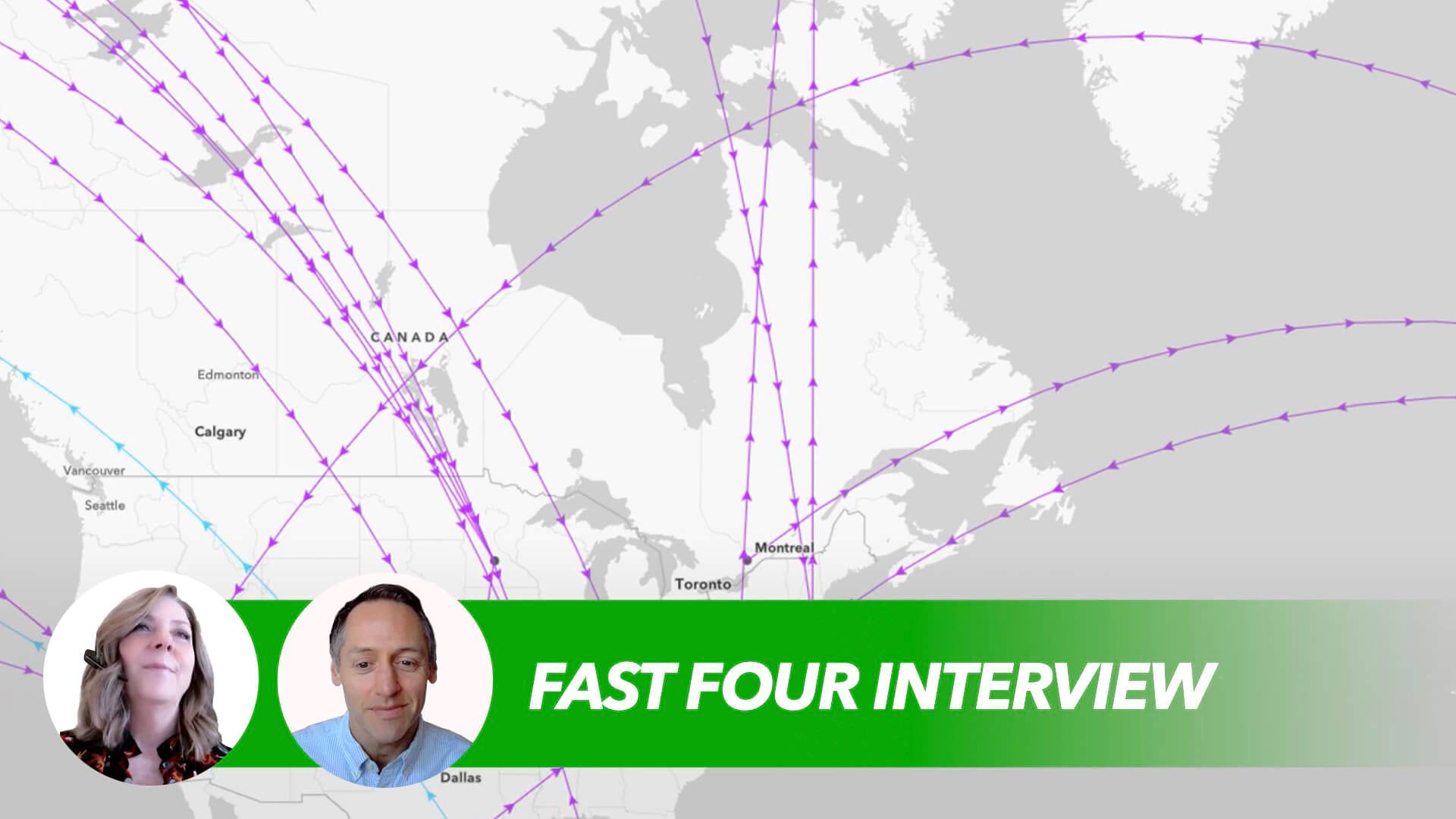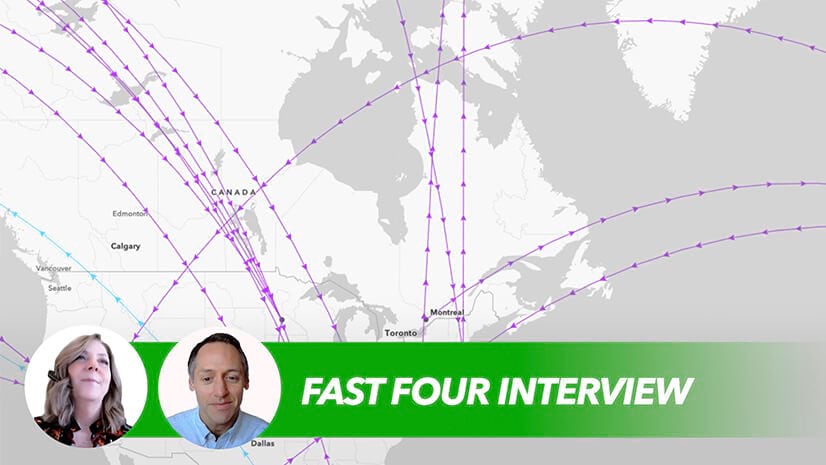Beginning in 2027, large companies doing business in California will need to disclose their scope 3 emissions. The US Securities and Exchange Commission is considering a rule that would require scope 3 emission reporting at the federal level. In Europe, the disclosure trend is already well along, with scope 3 reporting beginning in 2024.
Around the globe, regulators are urging businesses to move beyond pledges and take action—mindful that we’re running out of time to moderate global temperature rise and avert the consequences of an unbalanced climate.
With scope 3 reporting rules, officials are asking corporate leaders to examine their supply chains in ways they may have overlooked in the past. It’s a compliance issue, of course, but this form of compliance has its perks, says Esri’s Cindy Elliott. As companies improve their ability to measure emissions from the value chain, they’ll inevitably see efficiencies—social, environmental, and operational—that can improve the company’s resilience and bottom line.
In this Fast Four conversation, Cindy Elliott tackles two common myths surrounding scope 3 emissions and explains how an operational basemap can help companies navigate not only emissions regulations, but business resilience and social responsibility.
Watch the short video interview or read the transcript below. Visit the full Fast Four series to explore the role location intelligence plays in today’s foremost business challenges.
Chris Chiappinelli: Welcome to the WhereNext Fast Four. Today we are talking scope 3. Since the Paris Agreement in 2015, companies have pledged to curb emissions to help stem the rise of global temperatures. The narrative has certainly been compelling, but the action has been lacking, according to the UN, the IPCC, and others. We’re just not hitting the mark on a lot of these targets.
Cindy Elliott is here to talk about why that matters and what, in particular, is changing for companies when it comes to scope 3 emissions. Cindy, good to have you with us today.
Cindy Elliott: Thanks, Chris. And I agree with you completely. I think across the board we acknowledge that at our current pace, we’re not going to hit those goals, which is going to be catastrophic to the planet and society.
What we’ve really learned since those first agreements came out is where and how impact actually happens, which is mostly at the source of the finished goods, which we refer to as the scope 3 zone.
I would say that these newer regulations, such as the EUDR, the UKDR, as well as the more widely adopted and more traditional food traceability regulations, are really forcing brands to have greater accountability and transparency through their entire value chain, from that raw material to finished, packaged good. They are now required, through these regulations, to own the impact of their products, both environmentally and socially, across the full value chain.
Moving forward, if these firms can’t quantifiably demonstrate traceability overall and that they’re operating in risk-free environments, they won’t have access to markets adopting those regulations.
Chiappinelli: What is that changing for companies then?
Elliott: In my experience, I think it’s the misconceptions around emissions and scope and in particular scope 3, and applying that true impact within the end-to-end business operations.
For me, there are two specific myths that I hear about scope 3. First is that most organizations have become adept at reporting their own operational footprint: their practices, their facilities, and the sites that they wholly own or operate. These are normally within the concept of scope 1 and 2 emissions.
However, science tells us—and companies are responding to this—that the majority of emissions are caused by scope 3. For most brands and manufacturers, scope 3 accounts for 70 to 90 percent of the total emissions of a finished product.
That value chain, all the way through tier four or five, down to the raw material—whether that’s the farmed cotton, rubber or leather, or minerals such as lithium—this concept of scope 3 has the most catastrophic environmental and social impact.
Secondly, organizations, governments, and even the average consumer tends to believe that the greater emissions or CO2 that arise come from trucks, trains, cars, and ships. Although it is still very important to reduce impacts as much as possible from those vehicles, the actual impact of transportation within supply chain is a fraction of the scope 3 impact from the value chain of finished goods.
Chiappinelli: In terms of what people are doing, what companies are doing for scope 3, where does location data and location intelligence play in here?
Elliott: Across the board with retailers, manufacturers, agriculture, and other industries, I see a surge in activity to map the supply network.
However, most outcomes I’ve seen are in charts and graphs and spreadsheets which actually don’t easily communicate where they’re operating and their impact by region. With location technology and geospatial intelligence, I see organizations taking that same data and visualizing it on a map, and then they’re able to further enrich their own operations data with more site information. Where are facilities located in the context of other things such as ports and roads? How are upstream and downstream suppliers connected? So, they’re actually visualizing the flow of goods throughout the network.
I refer to this as the operational base map, a living dynamic asset within the business enterprise. And with this resource, firms can continue to add enrichment to the map, climate conditions such as droughts or flooding, policy and trade boundaries, deforestation and land cover, and especially apply known risks or restricted trade areas that are recognized for exploitive practices.
Chiappinelli: Given all that visibility that you can get from that kind of operational base map, what kind of results can companies get from them?
Elliott: Well, I think it’s really exciting today. More today than I’ve ever seen, organizations are taking sustainability seriously and they’re beginning to adapt their operating models accordingly.
Companies are learning that as they create a more resilient supplier ecosystem that includes authoritative traceability and transparency, they are more able to withstand the volatility and reduce what I refer to as surprises across their value chain, especially within that scope 3.
There are three key areas I think this resilience is materialized financially for organizations:
- They’re able to maintain access to the best markets by keeping pace with shifting regulations across the globe. With this living base map, they maintain access to markets because they can quantifiably demonstrate that they’re tracing their products all the way through tier four and tier five and keeping pace without those regulations.
- Building brand value with improved customer loyalty because they are practicing greater sustainability, but they’re also reducing social and environmental risks.
- And finally, they’re able to create proactive insights into this emerging risk before any major disruption occurs.
All of these have significant impact to the bottom line that helps these companies not only be more sustainable and resilient, but they tend to be also the top performers in their categories as well.
Chiappinelli: That’s great perspective on the interrelated nature of all those things, the social, environmental, and then the business performance as well. Thank you for being with us, Cindy.
Elliott: Thank you, Chris.
Chiappinelli: For more information, for more details on climate action from a business perspective, check out the link on the screen or in the article. As always, thank you for being with us on the WhereNext Fast Four.









